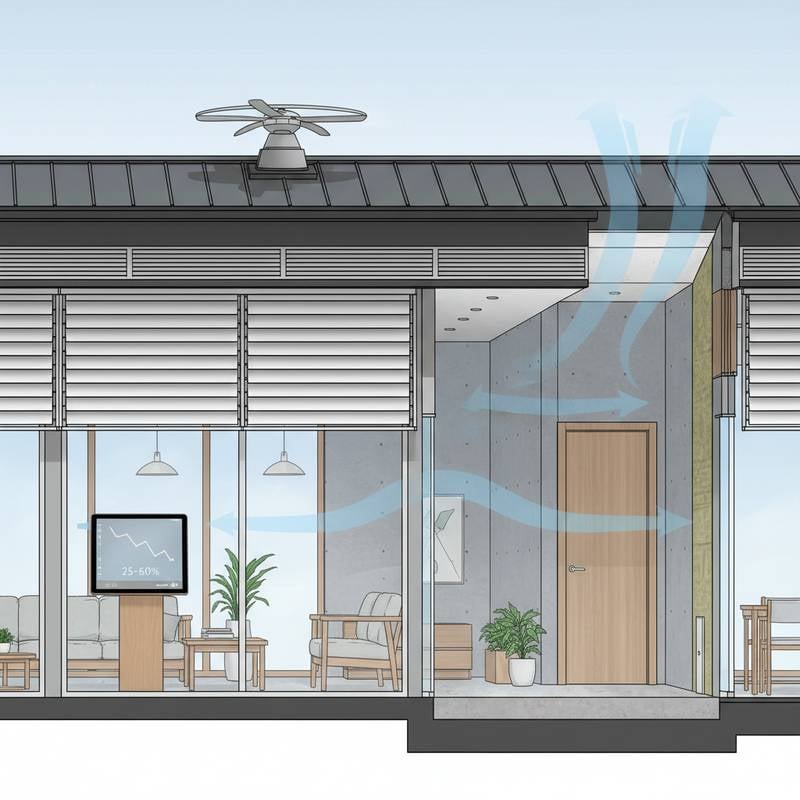Key Points
- Transitioning from gas to electric systems reduces operating costs by up to 40 percent, particularly when combined with renewable energy sources.
- Electric appliances improve indoor air quality and demand less maintenance compared to gas models.
- Federal and local incentives reduce conversion costs by 20 to 50 percent, broadening access to upgrades.
- Strategic planning delivers optimal comfort, efficiency, and savings in diverse climates.
The Drive Toward Home Electrification
Homeowners now picture daily life without the smell of gas or rising utility expenses. Regulations across regions limit or ban new gas connections to lower emissions and ready homes for sustainability. This shift raises a key question: how does full electrification support financial objectives and everyday practicality?
Clean energy economics offer strong evidence. Electric technologies have improved in efficiency, providing cleaner performance and frequently lower operational expenses. With these rules expanding, forward-thinking homeowners upgrade their homes for better comfort, safety, and lasting value.
Why Electrify Your Home
Gas appliances release carbon dioxide, nitrogen dioxide, and other pollutants straight into living spaces. These emissions harm respiratory health and diminish indoor comfort. Electric systems, powered by renewables, eliminate indoor combustion, simplify ventilation, and lower fire hazards.
Economic benefits go deeper. Modern heat pumps, induction ranges, and electric water heaters surpass older models in performance. Correct installation cuts energy use by 30 to 60 percent versus inefficient gas systems, leading to steady monthly savings and increased appeal in markets that value low-emission homes.
Assessing Costs and Future Gains
Upfront costs for moving from gas to electric appear high, but long-term outcomes show clear advantages. Partial updates may cost less than ten thousand dollars, while full renovations exceed that amount several times. Incentives like federal tax credits, utility rebates, and local programs cut these expenses by thousands in equipment and installation fees.
Ongoing savings build on these offsets. Electric systems have fewer parts subject to wear, which means lower maintenance needs. Integrating rooftop solar or community energy options shortens payback periods to under ten years, with lifetime returns exceeding 100 percent. Fully electrified properties often see home values rise by 3 to 7 percent.
Choosing the Right Equipment
Every home presents unique factors, such as electrical setup and regional weather. Start with high-impact upgrades in heating and cooling. A modern heat pump replaces both furnaces and air conditioners with one efficient unit, providing heating and cooling as needed.
Induction cooktops deliver precise temperature control without open flames, and heat pump water heaters paired with electric dryers reduce overall energy use. Select gear with Energy Star ratings and independent lab certifications for proven efficiency. Consult licensed electricians and HVAC experts for load calculations, as older panels may need upgrades to handle higher demands. These professionals assess your home and create a tailored plan that fits your budget and schedule.
Strengthening Home Resilience with Electrification
Electrification extends beyond environmental choices; it builds long-term durability. Electric systems integrate seamlessly with battery storage, allowing homes to power essentials during outages. They also work with smart thermostats and devices that adjust consumption during peak grid times.
In cold climates, variable-speed heat pumps or dual-fuel setups maintain reliable operation in sub-freezing conditions. Hotter areas gain from electric water heaters and sophisticated cooling systems that ensure year-round comfort at lower costs.
Practical Steps for Electrification
Start with a professional energy audit to identify high-potential efficiency gains. Prioritize quick wins like heat pump installation or induction cooktops for immediate comfort and savings. Follow with electrical panel upgrades or solar integration as phased, forward-looking moves.
Investigate incentives early to maximize financial benefits. Many programs require pre-approval before work begins. Keep detailed records of appliance specs and installer credentials to meet rebate requirements.
Unlocking Lasting Advantages
Electrification surpasses regulatory compliance. It creates a route to lower expenses, healthier indoor spaces, and higher property value. Homeowners who adopt this approach secure ongoing financial stability and contribute to environmental progress.










